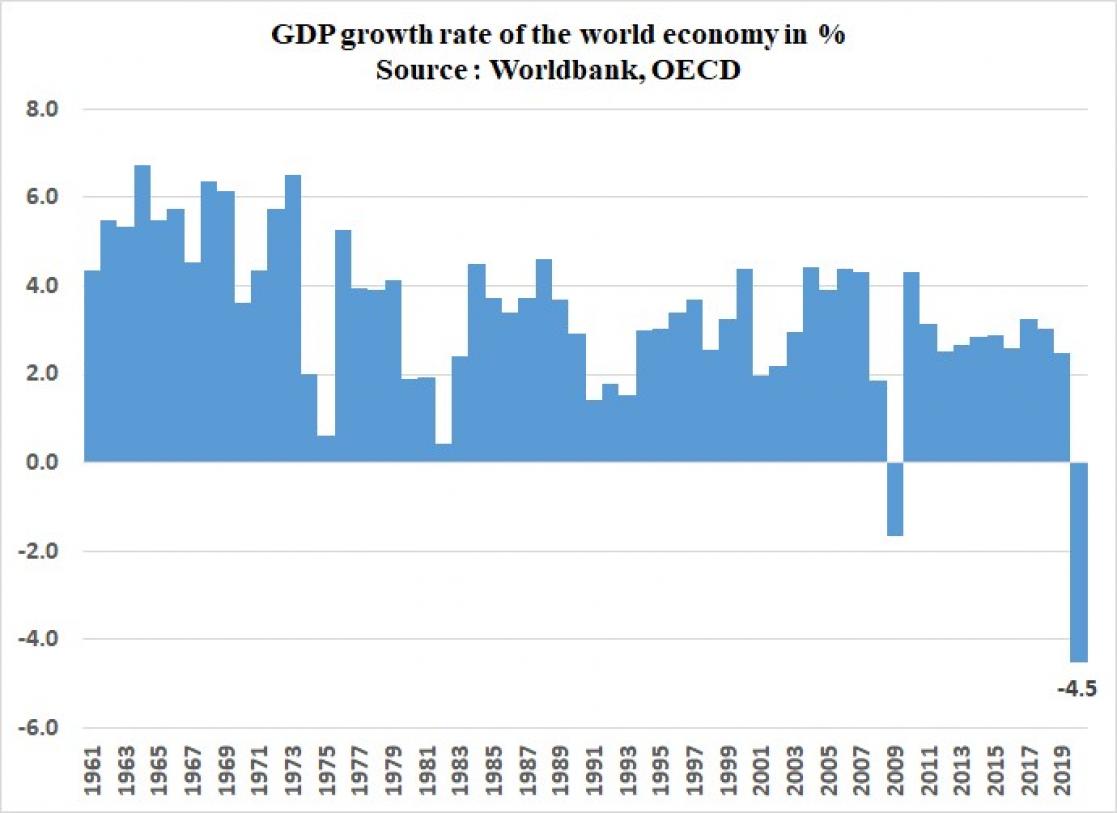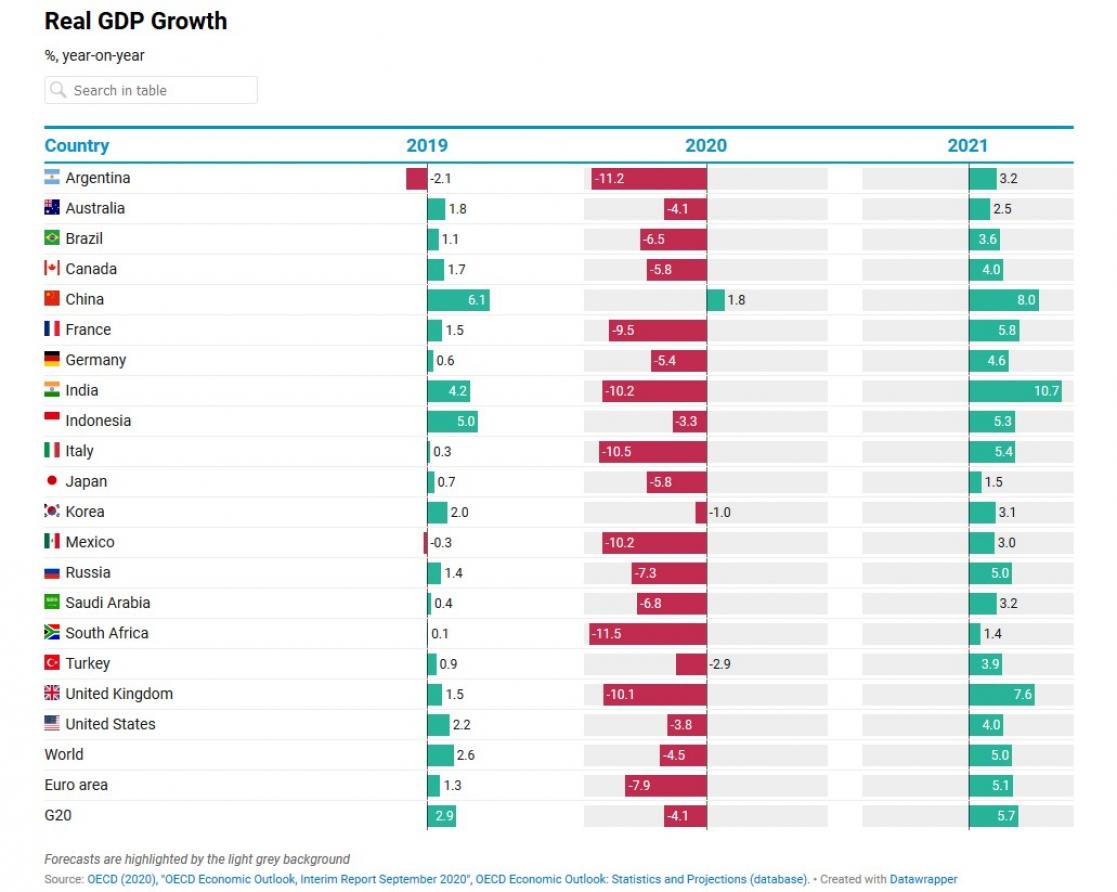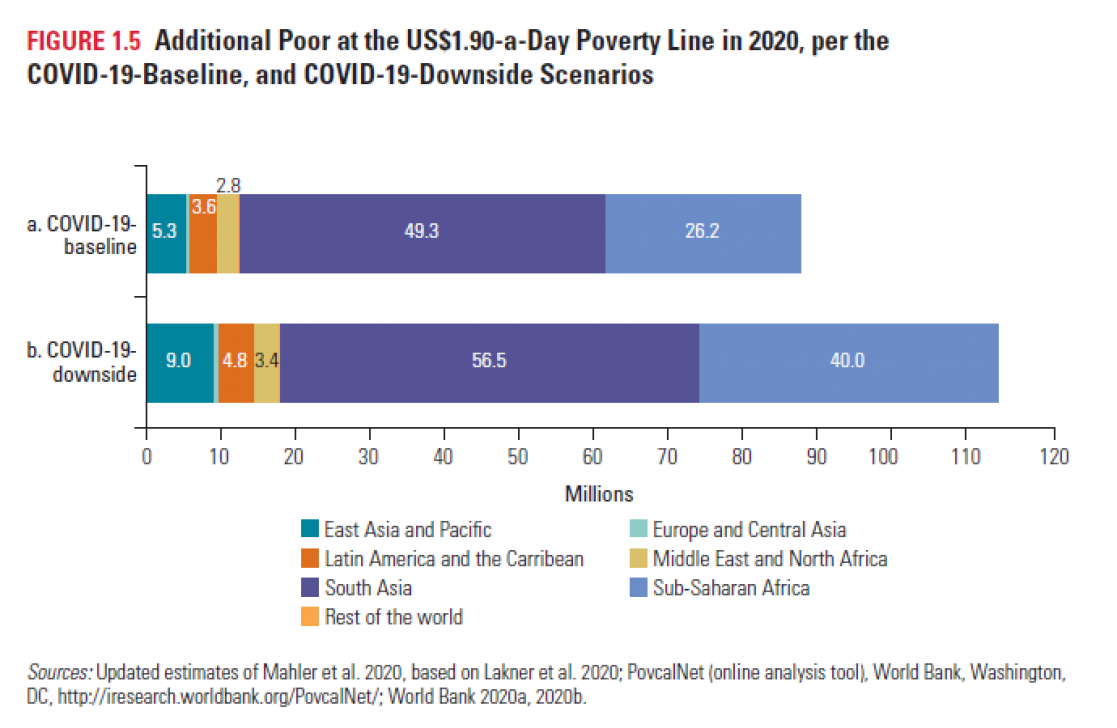How COVID-19 is reshaping the world

COVID-19 has pushed the world into the worst and most global economic crisis since the Second World War. The advanced economies, and in particular Europe, are badly hit but many developing and emerging economies are going through very difficult times too. The world risks becoming even more unequal and face a major setback on reduction of poverty.

“Many developing and emerging economies are going through very difficult times. The world risks becoming more unequal and face a major setback on reduction of poverty.”
China was the starting point of the epidemic, but also the first country to contain COVID-19. According to OECD, China is expected to be the only G20 economy not to fall in recession this year. However, his growth rate will be the lowest since 1976, at the end of the Maoist era.
This relative success is at the core of the growing confidence displayed by the Chinese leadership. However, the reinforced authoritarianism is increasingly at odds with the evolution of Chinese society, and not just in Hong Kong. The concentration of power in the hands of President Xi Jinping calls into question the system of checks and balances within the ruling group that had enabled China to successfully emerge in the last 40 years. The Chinese economy is also deeply affected by the trade war with the United States. In particular, it is not certain whether it can keep its high-tech trajectory without access to American technology.
China probably no longer spared from financial crises
China had accumulated a very large amount of public and private debt during the last decade. This indebtedness has increased massively with the current crisis. In the future, China may no longer be spared from the financial crises that shake regularly Western economies.
Finally, China is facing also an accelerated ageing of its population, which is a formidable challenge for a country that still lacks a developed system of social security. In addition, the country will have to address the environmental damages that have built up over the years, aggravated by climate change, which is likely to be very negative for China.

Japan and Korea, have contained the epidemic well so far. However they are expected to be in recession this year, due to the decline in exports and the interruption of supply chains. In Japan, public debt should approach 250% of GDP, the highest level among developed economies.
India and South Asia badly affected
South Asia is badly affected. India has implemented the most drastic lockdown in the world. The lifting of this containment has led to a resurgence of the epidemic and the number of deaths now exceeds 100,000 even if, relative to its population, mortality remains limited.
Economically, India is expected to be one of the worst affected G20 countries with a 10.2% decline in GDP this year: the impact of the strict lockdown could not be compensated, as it has been in Europe, by a massive increase in public spending.

“COVID-19 risks creating a massive increase in poverty: in some parts of the world, the pandemic is likely to cause more deaths from hunger than from the disease itself.”
Reversing the trends of recent years, COVID-19 risks creating a massive increase in poverty: in some parts of the world, the constraints imposed by the pandemic are likely to be linked to more deaths from hunger than from the disease itself.
According to the World Bank, some 50 million people in South Asia will fall below the $1.9 a day income threshold, defining extreme poverty. The halt to economic growth in South Asia is set to accentuate the tensions dividing India and other countries in the region.
The US less affected economically than Europe
Coming back to the developed world, the United States has actually the highest number of victims of COVID-19. The mortality rate exceeds that in the European Union. Still, the American economy is expected to decline significantly less than in Europe this year, with GDP falling by 3.8% (versus 7.9 % in the Euro area).
Even if the American health response has been largely deficient, the economic response has been vigorous with a public deficit of 16.8% of GDP (compared to 10.9% in Europe). The crisis have also further strengthened the dominance of the American digital industry.
“In the US, the effects of this crisis are likely to be more lasting than in previous ones and confidence in the dollar and US debt could be shaken.”
Nevertheless, the effects of this crisis are likely to be more lasting than in previous crises and ultimately, confidence in the dollar and US debt could also be shaken. These difficulties are reinforcing internal tensions, which may become the main weakness of the United States.
Regardless of who wins the US elections, the underlying trends will probably continue. Whether it is the rivalry with China or the growing withdrawal into domestic affairs. The mismanagement of the epidemic is also likely to have accelerated the decline in US leadership.
Latin America, the new epicentre of the pandemic
Further south, with 11 of the 20 most affected countries, Latin America became this summer the epicentre of the epidemic. Among the G20 countries, Mexico, Argentina and Brazil are also among those most affected economically.
Brazil in particular has increased its public deficit to 15.1% of GDP, the highest level in the G20 behind the United States. Likewise, Argentina has had to default on its debt for the third time in 18 years. Here too, COVID-19 is aggravating social and political tensions.
Africa for its part, has so far escaped the dire predictions regarding the health aspects of the pandemic. Having a young population has protected it but also its management of COVID-19, drawing on the lessons of the Ebola outbreak. Nonetheless, it is still severely hit economically. Africa suffers from the effects of the sanitary measures, particularly in agriculture, the drop in exports of raw materials, the collapse of tourism and the drop in remittances from emigrants.
The first recession in Sub Saharan Africa since 25 years
The International Monetary Fund predicts a 3 % recession in Sub-Saharan Africa, the first in 25 years. South Africa is expected to be the most affected G20 country in 2020. As a result, some 30 million Africans will swell the ranks of the very poors who earn less than $1.9 a day.
In this context, Europe is one of the most affected regions in the world, both in terms of health and economy. The decline in GDP is expected to be double that of the United States. A deeper recession also than in Japan or Korea, not to mention China.
In Europe, the Pandemic is far from over
During the past summer we believed often, that the pandemic was almost over in Europe but now we see that we are very far from that. Resources are limited and there is a delicate balance between health restrictions and their effect on economic activity. This creates political tensions between different levels of governments and European coordination is more needed than ever.
“The crisis has shown how much Europe is dependent from China because of deindustrialisation and from the United States in the digital economy.”
In a first phase, short-time working helped to preserve jobs and incomes of most Europeans. However, this does not solve the question of more structural adjustments in sectors that will probably never return to the pre-crisis situation. The crisis has also shown the extent of Europe's dependence on China because of deindustrialisation and how much we are lagging behind the United States in a digital economy that will become even more crucial after the crisis. The decline in GDP in Europe is also coupled with strong internal disparities.
For all these reasons, it is essential that we "go all out" to revive our economy. Last July, the Council approved the Next Generation EU plan and we must now implement it without delay. With the hundreds of billions foreseen, we must prepare our societies for the green transition and the digital revolution, while limiting the internal gaps through transfers to the most affected countries.
“With Next Generation Europe, we must "go all out" for the green transition and the digital revolution, while limiting the internal gaps through transfers to the most affected countries.“
However, in spite of all our internal difficulties, we must also step up our efforts to support the developing and emerging countries. We must first help our partners on the health side, because as far as the virus will remain somewhere, all of us will remain vulnerable. The question in particular of the availability of vaccines for developing countries is central and that is why we are strongly engaged in the international COVAX initiative.
The necessity to support developing and emerging countries
But it is necessary also on the economic side. The G20 countries have extended this week for six months in 2021 the Debt Service Suspension Initiative (DSSI), launched in the spring to help 73 countries. However, it is obviously not sufficient: the devastating impact of the COVID-19 put debt restructuring back on the agenda as G7 Finance Ministers recognized last September. We will push in that direction in order to embark all relevant actors, and in particular China.
“I am deeply convinced that the future of Europe’s global role will depend on our capacity to successfully lead the fight against the crisis at home but also abroad.”
The ability to increase our help to developing countries is especially relevant with Africa, which is of strategic importance for our future. One of the African leaders told me earlier this year: “you said that you wanted to be our best partner, now you can prove it”.
I am deeply convinced that the future of Europe’s global role will depend on our capacity to successfully lead the fight against the crisis at home but also abroad.
